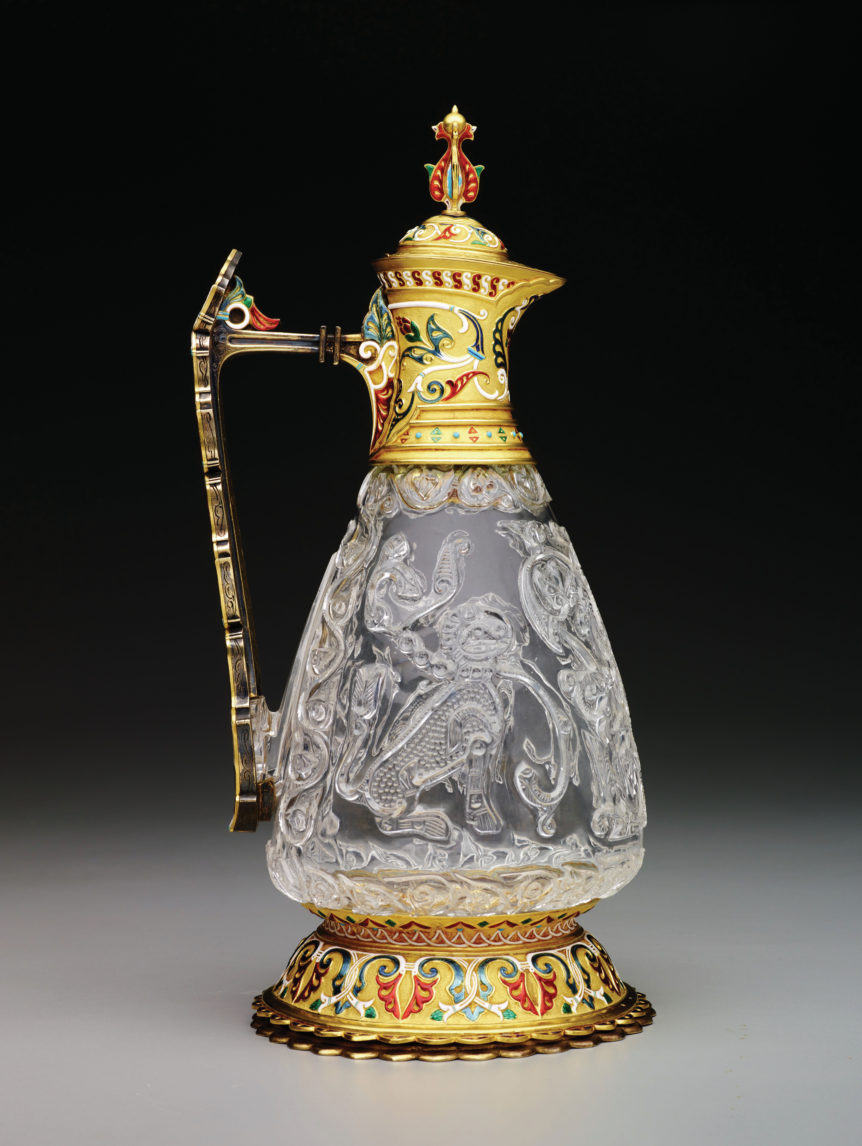
Ewer, Egyptian, late tenth–early eleventh century, with nineteenth-century gold mounts by Jean-Valentin Morel. Keir Collection of Islamic Art on loan to the Dallas Museum of Art.
Built by a Hungarian, named for an eighteenth-century house he owned in London, lent after his death to a museum in Berlin, and now residing at the Dallas Museum of Art—the Keir Collection of Islamic Art is the epitome of global cultural exchange even before you consider its contents. Those encompass some two thousand works from three continents and thirteen centuries of Islamic art and design— including carpets and textiles, lusterware, metalwork, ceramics, and works on paper. The Keir Collection is regarded as one of the greatest and most comprehensive of its kind. It was assembled over half a century by Britain-based real estate tycoon Edmund de Unger, who, before he died in 2011, reached a longterm loan agreement with the Pergamon Museum in Berlin to house the collection. Worries over fiscal belt tightening in Germany prompted de Unger’s heirs to broker a new loan pact with the DMA in 2014. A new gallery dedicated to the Keir opened there in April, with the collection’s impossibly fine rock crystal ewer, carved from a single stone in late tenth- or early eleventh-century Egypt, as its centerpiece. Given the intricacy of Islamic art, an appreciation of its splendors stems from close examination. Since Dallas reportedly has one of the fastest growing populations of followers of Islam in the country, the DMA has a built-in audience for the Keir gallery. And Texans with deeper roots have a place in which to develop a richer understanding of the culture of their new neighbors.
The Keir Collection of Islamic Art Gallery • present exhibition on view to April 28, 2019 • Dallas Museum of Art • dma.org

